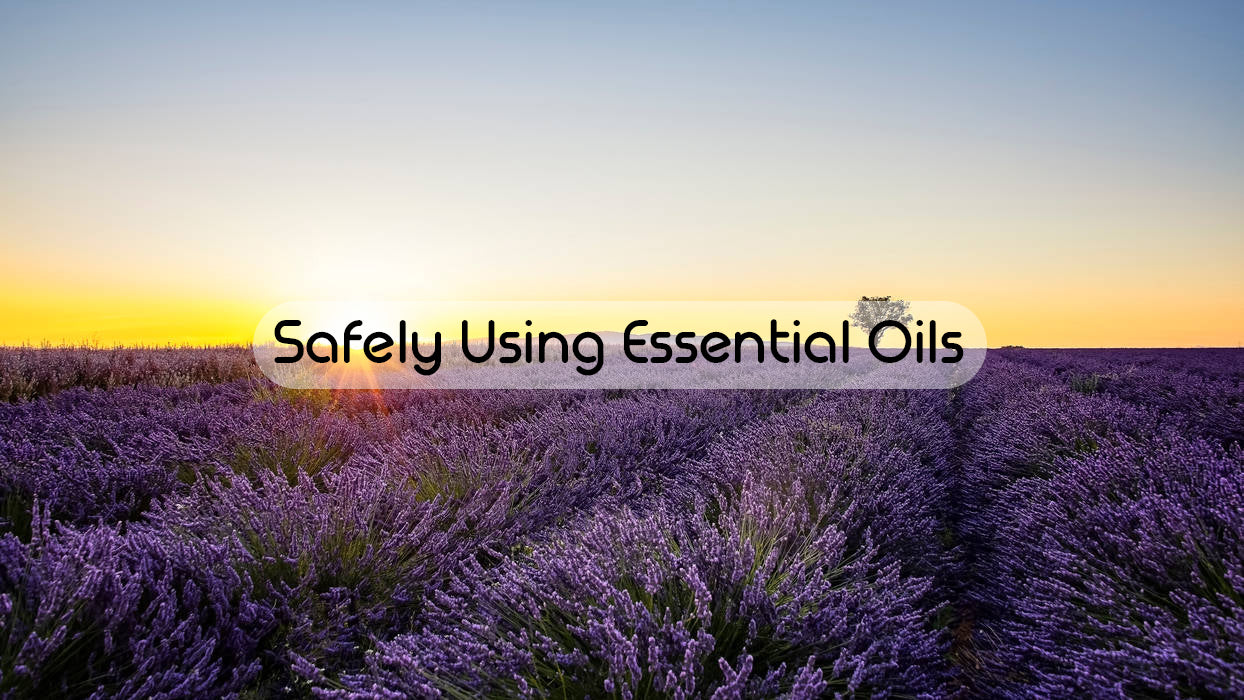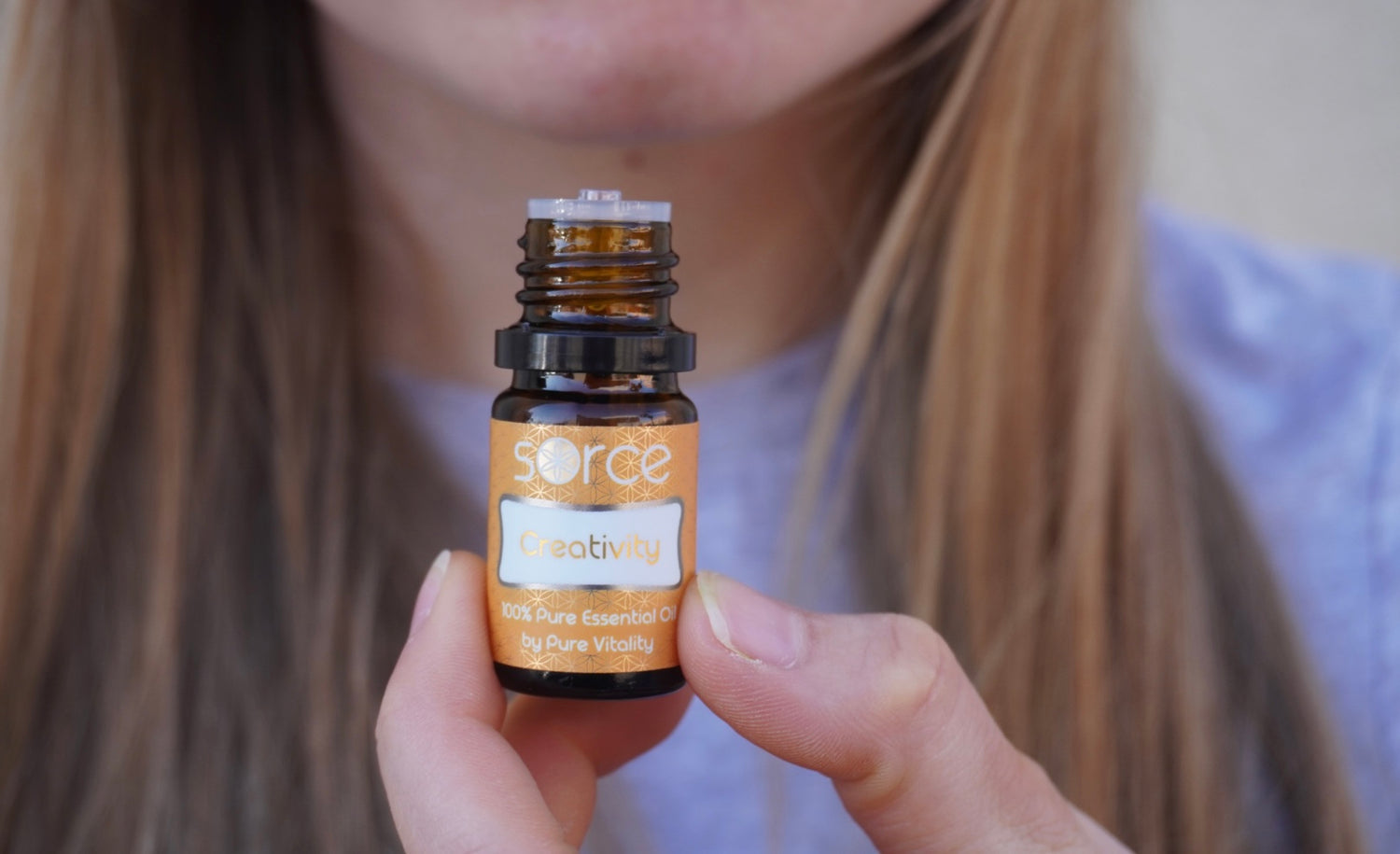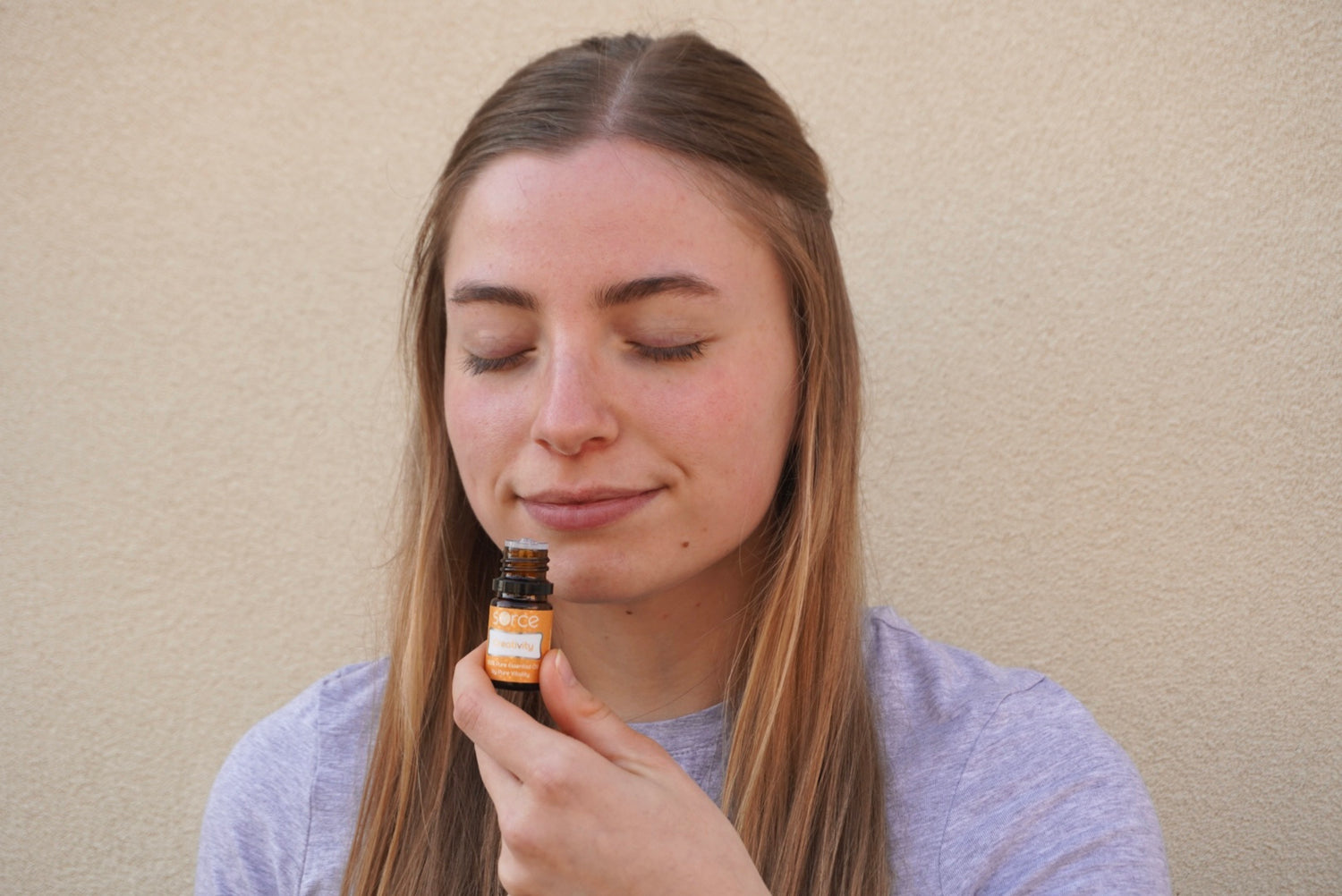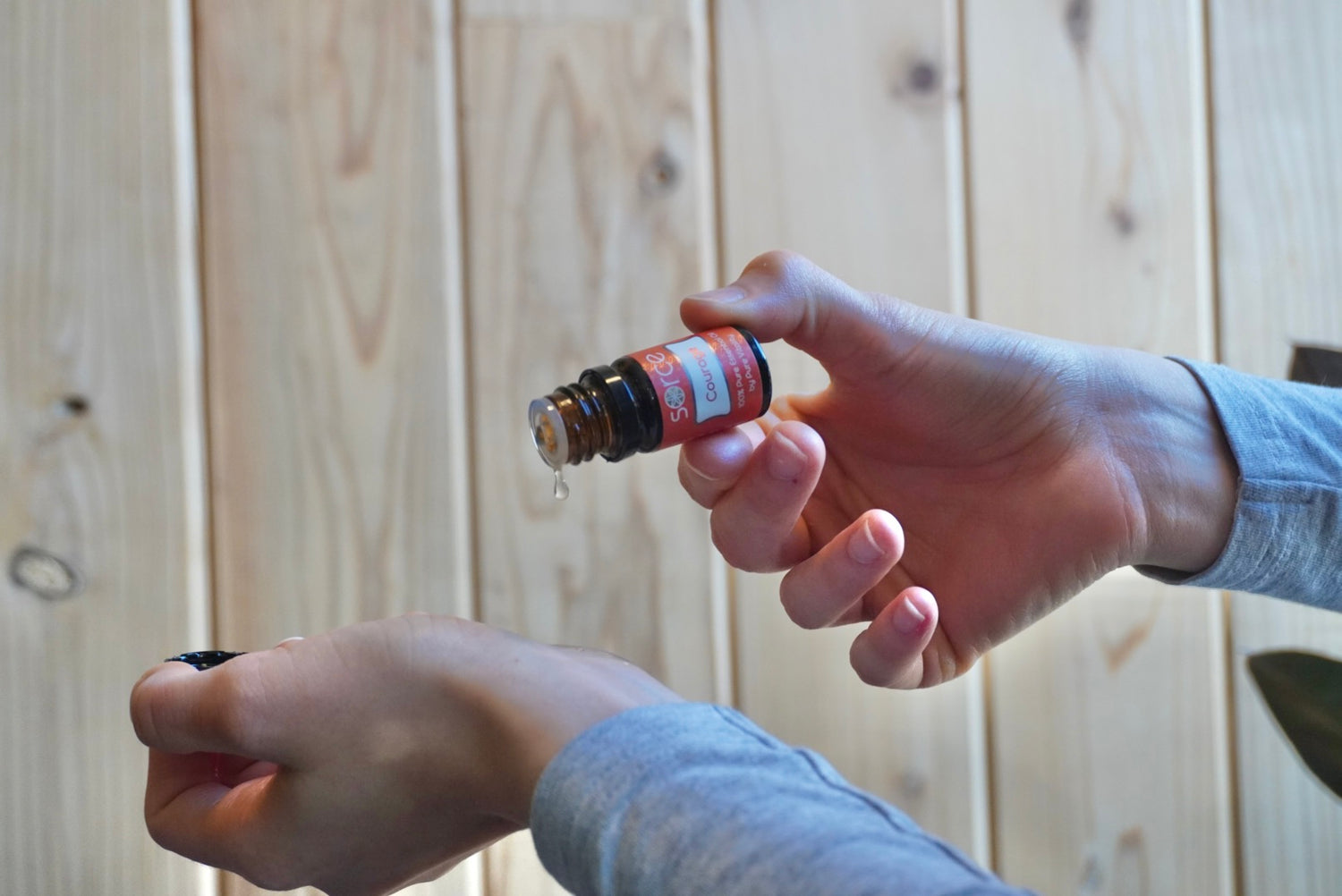
Essential oils have been used throughout the world since ancient times. In modern times you can incorporate essential oils safely and effectively, knowing it's backed by science. Read these guidelines to feel confident in safely using essential oils.
The first step in essential oil safety is to find a company that you can trust. Essential oils are fragile and can be contaminated or compromised during the extraction practice. Make sure that you can verify the extraction methods that were used to produce the oils. Find a place with strict protocols so you can rest assured knowing that the oils you receive are consistent and of the highest quality.
Since you've found the purest Sorce, the next step is to dive into the array of uses and benefits each oil has to offer. Use essential oils with intention. Being a brand new product you’re introducing to your body, it’s best to have an understanding behind the oil you’re using. Know the recommended application methods for each oil. While this may seem overwhelming, before long using Sorce essential oils will feel like second nature.
Safety Guidelines
These are some good general guidelines that you should follow for every oil that is welcomed into your home.
Use One Oil at a Time
Start by only using one oil at a time so you know how your skin will react. After applying the new oil, wait at least an hour before applying another oil.
Watch for Reaction
The Patch test involves applying a drop of essential oil to a hairless area of your body such as your forearm. After application, wait an hour and see if any irritation occurs. If irritation does occur dilute the area by adding a carrier oil or any other fatty oil to the irritated area. Avoid using water as this will drive the oil deeper into the skin. Learn More
Dilution
To best learn how your skin will react when using a new oil dilute it with a carrier oil. Follow the label on the essential oil bottle for recommended dilution.
Check the Label
Always check the labels on the bottle for specific directions and warnings.
Avoid Sensitive Areas
Sensitive areas on the body such as your nose, eyes, broken skin, and inner ears do not react well with essential oils and should be avoided altogether.
Check for Photosensitivity
Certain oils, especially those belonging to the citrus family can cause a reaction when exposed to the sun after use. Only use these oils when you know you will be spending a limited amount of time in the sun, such as during the evening. To be safe check the label for photosensitivity warnings before you apply the oil topically. Once an oil belonging to this category has been applied, wait 12-48 hours depending on the label suggestion before exposure to UV rays. Learn More
Safely Storing
Always store essential oils in a safe place, out of reach of children, to mitigate accidental ingestion or improper application. Some of the compounds within essential oils can be altered from overexposure to heat or light. For this reason it’s recommended that you store them in a place that’s room temperature and away from direct sunlight.
Careful with Children
The wide array of essential oil benefits can be enjoyed by children, but because a child’s body is still developing use caution and supervise the use of oils. Always dilute an oil before applying topically to a child's skin. Apply to the child’s feet before trying other places. Certain oils like lavender are best to avoid altogether in developing children due to the way they affect the body's hormonal system. Learn More
Ask a Healthcare Professional
For any specific concerns you may have about how essential oils might affect your body, it’s recommended to seek advice from a healthcare professional.
Consult your healthcare professional about any serious injury or disease. It is not recommended to self-prescribe or diagnose any natural substances for things that require the attention of a healthcare professional.
The guidelines here are intended for the U.S. only.

Handling Essential Oil Sensitivity
All bodies are unique and individual. As you begin your journey of improving your well-being, you may find that your body reacts differently to certain oils. Essential oil sensitives can usually be remedied with just a few extra steps. Start by diluting the oil to see how you react to a lower dose. If your skin is exceptionally sensitive, use half the recommended concentration and use more carrier oil. If your skin still reacts negatively we recommend that you refrain from using that particular essential oil. Many essential oils contain similar healing benefits- find a replacement that will agree with your skin.
Allergic Reaction to Essential Oils
Normally an allergic reaction happens when the body misidentifies a harmless protein as a threat. However, essential oils do not contain any proteins. This means the body reacts differently than it would to a nut or wheat allergy. If you experience similar symptoms to an allergic reaction after using an essential oil, the molecules in the oil may be causing irritation. Sensitivities are rare but users should be aware of how their body responds to a new oil.
Sensitivity to an oil can manifest in any of the following ways:
- Swelling or tenderness of the skin
- Difficulty breathing
- A stomach ache
- Skin irritation (rash, hives, or excessive itching)
Treating a Reaction to Essential Oils
Immediately stop the use of an oil that causes a negative reaction. For any negative topical reaction, apply a carrier oil to the affected area to displace the essential oil. If the reaction occurred through aromatic use, turn off your diffuser and go to an area where you can breathe fresh air. Seek medical attention if a reaction is severe.
If you are an individual with an essential oil sensitivity try changing the application method, using a smaller amount, or diluting the oil further. Some oils may cause a reaction when diffused but not when applied topically or visa versa. Start slow with small amounts and keep track of which oils cause sensitivity and the application method that was used.

Cleansing the Skin of Essential Oils
For anyone who experiences skin sensitivities from using an essential oil, it’s best to remove the oil as quickly as possible by applying a carrier oil, or any fatty oil on hand, to the affected area and gently scrub the skin. The oil will help draw out the essential oil from the skin, which then can simply be wiped off. Repeat this process as needed. If you don’t have any carrier oil scrub the area with soap and water, rinse, and repeat until the area is free of essential oils. After the area is treated, apply your favorite moisturizer. Before applying that oil again, be sure to dilute it with a carrier oil to avoid any skin sensitivities.

What Does it Mean When an Oil is Photosensitive?
Certain essential oils contain furanocoumarins, which greatly increases UV sensitivity. If an oil containing these compounds is used on the skin and then directly exposed to sunlight, that area may have a negative reaction like a rash or burn. Never apply sun-sensitive oils if you plan on going into the sun afterward. You must wait between 12 and 48 hours before it’s safe to go into direct sunlight depending on the label's instructions. If you find yourself in the sun after applying a photosensitive oil, cover the area where the oil was applied with clothing. Specifications regarding sun sensitivity will be written on the label, making it imperative to read the labels before use.
Is Dilution of Oils Needed?
Diluting an essential oil doesn't dilute the benefits- the healing compounds will simply be distributed to your body in a way that’s more gentle for your skin. Here’s an outline of when you should dilute your oils:
Fur Babies
People aren’t the only ones who can benefit from essential oils. When using oils on your pet it’s important to give them the right amounts that won’t hurt their system. Make sure to dilute when applying to their fur or skin. Learn More
Child Care
Children are a lot more sensitive than adults. Their bodies are much smaller and still developing. Always dilute an essential oil before applying. Begin by applying to the sole's of the feet to test how they react. Learn More
Sensitivity Issues
Some people may find that their body reacts to even the gentlest of essential oils. If this is the case dilute the oil before applying. If a reaction still occurs even after dilution, discontinue using that oil and blends that contain that oil.
First Time Use
To avoid any major issues with skin sensitivities we recommend diluting an oil and performing a patch test when it’s your first time using an oil. Once you have a good understanding of how your body reacts to a diluted oil you can adjust the concentration and change the application method.
Hot Oils
Certain oils are known to be “hot” and should be diluted before use. Hot oils, like cinnamon, tend to be harsher on the skin. This is why you should always read the label before trying a new oil.
Choosing the Amount of Essential Oil to Use
Sorce essential oils are very potent, this means a little oil will go a long way. Using just a couple of drops can bring a wonderful variety of physical and emotional benefits. Due to skin sensitivities, it’s best to start with one drop of oil and slowly increase the amount to what is recommended on the label.
The amount you use will also depend on the application method. When using topically the amount used will be much less than the amount you would put into an essential oil diffuser.

Inhaling Essential Oils
Enjoy the aromatic benefits of Sorce oils through inhalation. One of the easiest ways is inhaling the fragrance from the bottle with deep, slow breaths. Another great way is to put a few drops on your palms, then cup your palms around your nose and inhale deeply. A popular method is to use an essential oil diffuser. To ensure nobody in your home has a sensitivity to a new oil oil we suggest running your diffuser for 15-20 minutes at a time. Once it’s determined how your body reacts to your preferred method of application, adjust accordingly.

Safely Using Essential Oils on the Skin
Using essential oils topically is a wonderful way to reap the benefits of Sorce.
Essential oils absorb in fatty tissues like the skin easily, making them lipid soluble. Start with a patch test when using a new oil to see how your body reacts. This can be done by adding one drop of oil to your skin and waiting at least one hour to see if any skin irritation occurs. If no irritation happens, increase the quantity of the oil you use.
It’s rare for someone with a skin sensitivity to a particular oil to have to avoid that oil altogether. Often times you may find that diluting an oil with a carrier oil can help your body not react negatively. If sensitivity persists after diluting, discontinue the use of that oil immediately.
Essential oils shouldn’t be used on any area of the skin that has been damaged or affected by a chemical burn.

Essential Oils for Children
When you experience the benefits of essential oils it’s only natural to want to share them with your children. Children’s bodies are still developing and are a lot smaller than adults. This can mean that children are much more sensitive to different compounds found within oils. With a few safety precautions, children can enjoy the benefits of oils.
Always use a smaller dose than what is recommended when applying essential oils to children. No matter the application method always start slow.
Dilute oils for children by age:
Age 0–1: 1 drop of oil to 8 drops of carrier oil
Age 2–6: 1 drop of oil to 3 drops of carrier oil
Age 7–11: 1 drop of oil to 1 drop of carrier oil
12+: Use the recommended amount on the label with 1 drop of carrier oil
When using an essential oil for the first time set a safe space for your child to determine how they will react. Dilute the oil and massage into their feet. The bottom of the feet is the safest place for an oil, especially for first-time use.
Education for your children is key for developing and establishing a healthy relationship with essential oils. Be sure to explain how potent essential oils are so they take them seriously. When oils are not being used put them some place children cannot reach them. Be sure to establish clear ground rules about only using oils when you’re watching.

Are Essential Oils Safe for Pets?
Most often pets are going to be safe with the use of essential oils. When diffusing an oil always make sure your pet can leave to go to another room where oil isn’t being diffused. Certain oils are toxic to pets so it’s important to be aware.
Essential Oils and Dogs
A dog’s sense of smell is much stronger than our own. Many oils are safe for dogs but we still recommend using low doses if you plan on putting oil directly on their skin or fur. A few examples of oils that should never be used on your dog or diffused in the same room as them are Eucalyptus, Tea Tree, Cinnamon Bark, Citrus, or Ylang Ylang, amongst others.
Essential Oils and Cats
There are a variety of essential oils that are safe for cats. However, cats lack certain enzymes that help their bodies break down compounds found in oils. Methyl salicylate and citrus/phenolic are compounds in certain essential oils that are especially toxic to cats. Avoid using any oils that contain these compounds on or near your cat including: Pine, Eucalyptus, Lavender, or Tea Tree, amongst others. When applying an oil to your cat’s fur or skin, start slow and dilute the oil.
Essential Oils for Birds and Pocket Pets
Methyl salicylate or citrus/phenolic negatively affects birds and pocket pets too. Make sure to do your homework before using essential oils on any pet. Do not diffuse oils in a room that animals are in cages and cannot leave the room.
